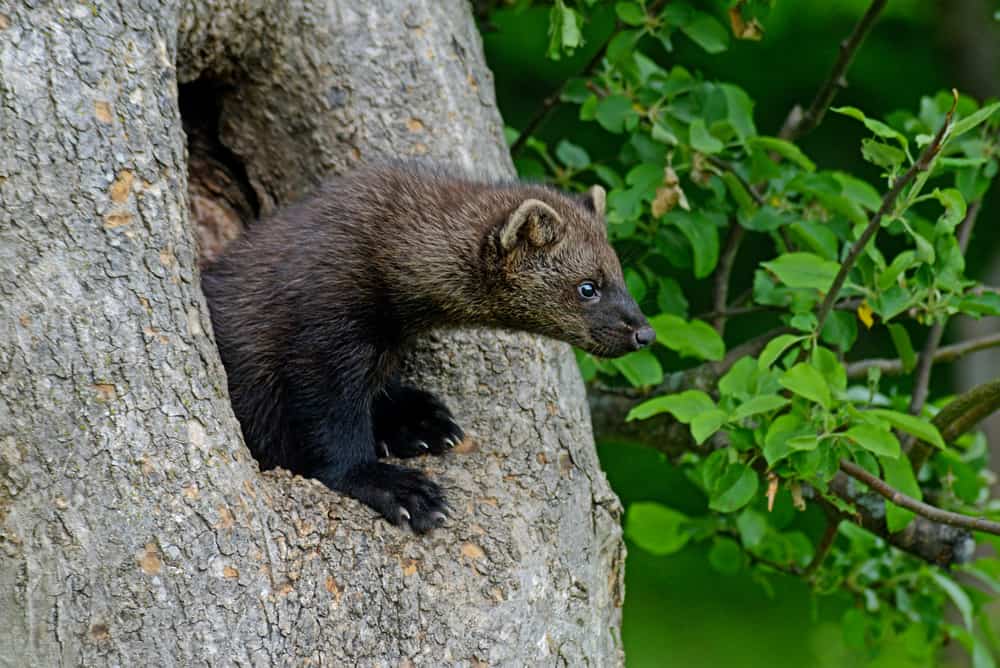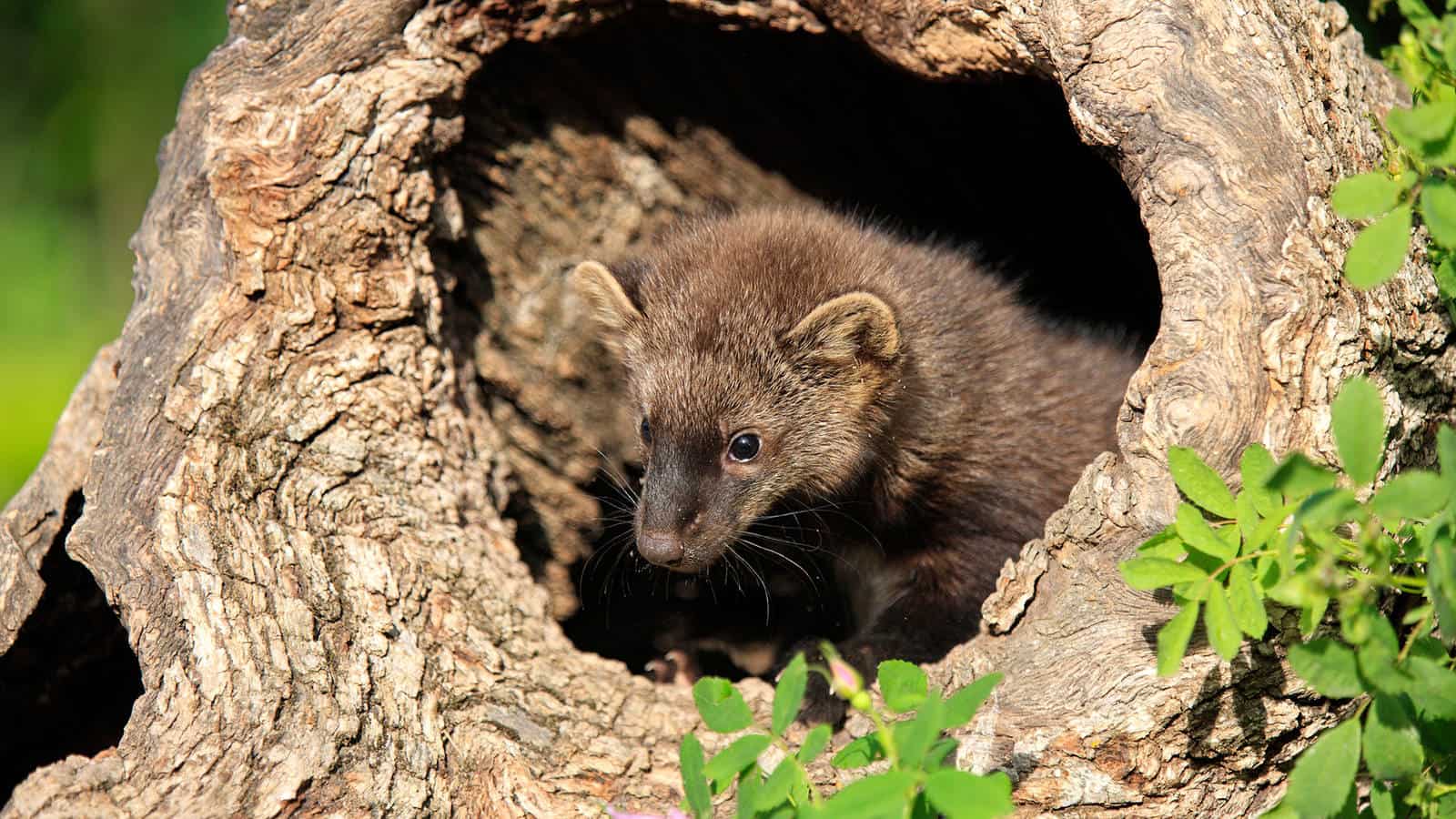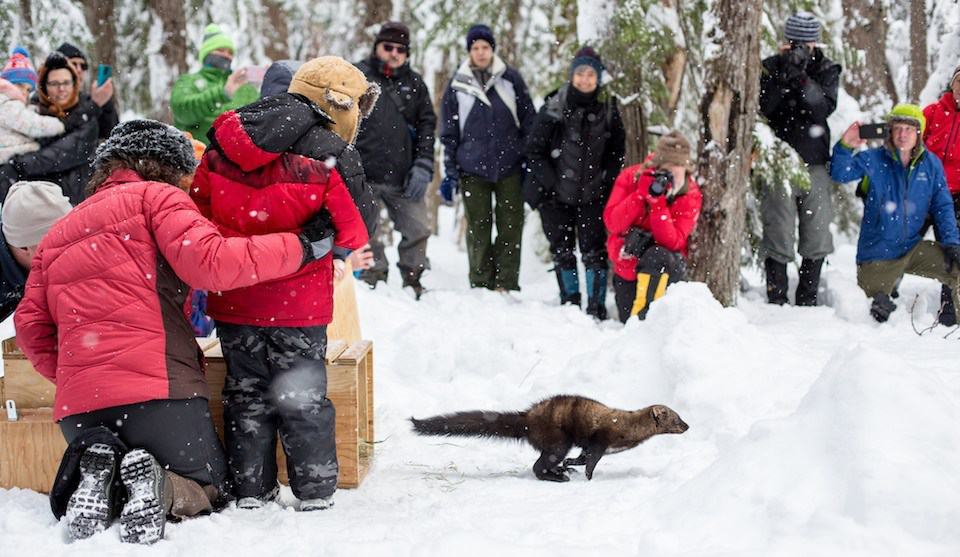
The Return of the Fisher: The Reintroduction of a Carnivore in the North Cascades
What’s fierce, agile, and doesn’t hunt fish? A Fisher! The Fisher (Martes pennanti) is a medium-sized member of the weasel family that despite its name rarely eats fish. These carnivores can be found throughout temperate forests in North America, from the Northwest Territories in Canada down to Oregon. Fishers hunt mainly small to medium-sized mammals and will occasionally eat nuts and berries when they are available. Fishers are one of the few carnivores that can successfully hunt porcupines. In some areas they were even reintroduced to control porcupine populations!
While you many have not have heard of this animal before, they have made local headlines over the past year. After several decades of being absent from the North Cascades, they were finally brought back into this ecosystem last December!
Fishers have a thick coat varies in coloration from brown to gray to ashy black. It helps them survive the tough winters of the temperate zone. Unfortunately, it pays to have a nice coat. In the 19th and 20th centuries, this species’ distribution throughout its range had started to precipitously decline due its soft coat. Its fur was such a hot commodity that it sometimes sold for up to $285 per pelt. Loss of suitable habitat due to logging also contributed to its decline.
In Washington State, fishers historically existed throughout most of Western Washington, Northeastern Washington, and the Blue Mountains of Southeastern Washington. By 1934, however, they were overhunted so much that the Washington Department of Game had to end the fisher trapping season. In 1998, after a status review by the Washington Department of Fish and Wildlife, fishers were classified as an endangered species. The review found that reintroduction would be the only way to recover the species in Washington.
In 2002 a WDFW assessment found that it was feasible to reintroduce fishers in Washington as there was suitable habitat and prey. The biggest reason for the decline, over-trapping, was no longer a present concern. The assessment concluded that the Olympic Peninsula and Cascade Range had the greatest amount of suitable habitat for fishers. Source populations of fishers in British Columbia and Alberta were deemed suitable for translocation into Washington State.

Biologists began releasing fishers back into Washington, after many years of planning, in 2008 when they released the first fishers into Olympic National Park. Between 2008 and 2010 90 fishers were released into the park with much success.
The next phase of fisher reintroduction in Washington State was to reintroduce Fishers back into the Cascades. The plan was to reintroduce 160 fishers from British Columbia into the Cascade Range with 80 individuals in the South Cascades and 80 individuals in the North Cascades. The hope was to form larger connected population throughout the Cascades. Since 2015, 70 fishers have been released into the South Cascades.
Biologists began releasing fishers in the North Cascades late last year. The first release is occurred near the Visitor’s Center in Newhalem on December with other releases scheduled to take place near the Cascade River Drainage. Pretty soon these housecat sized mustelids will be scurrying out of their transport boxes into the forests, ready to recolonize their former territories. This is exciting news as this reintroduction project is entering its final phase, and fishers are now returning the the North Cascades, and it won’t be long before we will see these stealthy creatures on the hunt for porcupines. Hopefully the restoration of this carnivore can inspire the restoration of other species.

This post was researched and written by Chris Williams for the Northwest Natural History course as part of the Institute’s Graduate M.Ed. program. North
Cascades Institute has not extensively fact-checked the information contained herein and recommends researching other sources of information to enhance one’s understanding of the topic.
For more information about fishers, here are some links:


I had no idea your organization existed until today. Your mission and goals are vital to this beautiful country we call home; thank you so very much for all you are doing.
Today we (My Veterinarian Clinic) got a worried passerby that there was an escaped ferret out in our parking lot. It turned out to be a fisher.. In S. Everett Washington – you know they made a huge return when they are in the civilian wilds of Everett WA!
Could possibly be a mink. Unlikely that it was a fisher since the releases have been limited and are far away from Everett.